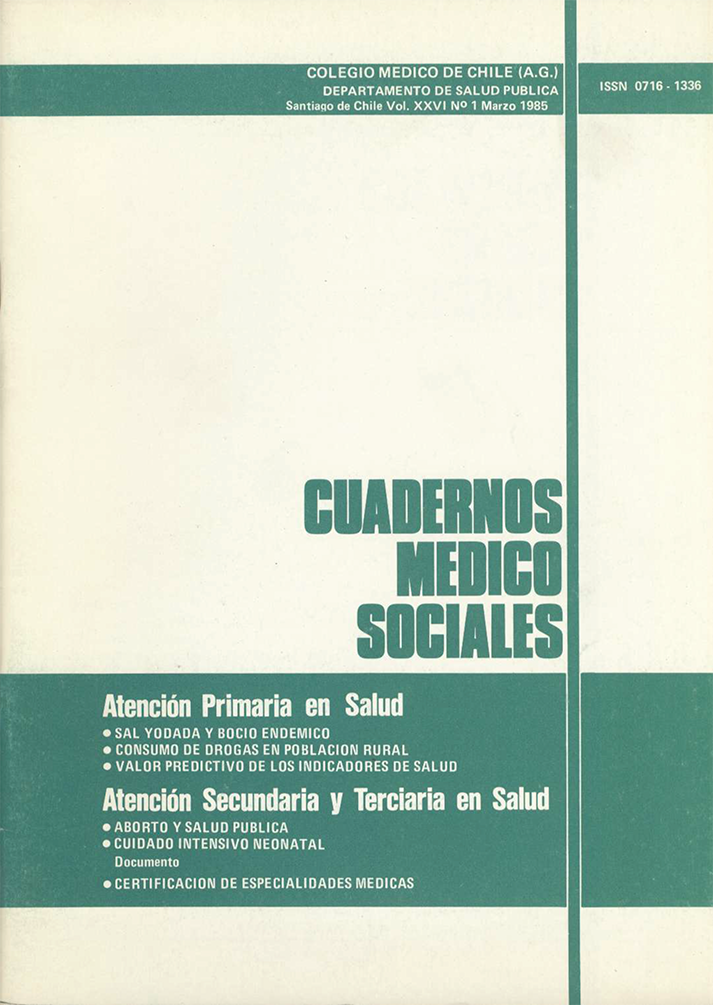Sal yodada en dos áreas de bocio endémico
Keywords:
Endemic Goiter, Iodized Salt, Seafood ConsumptionAbstract
101 samples of edible salt were aleatory drawn from food stores of María Pinto and Alhué (communities of high prevalence of endemic goiter) from February to July 1984. 92 were packed salt sold as iodine enriched (91.1%) and 9 were sea salt. 3% had the due iodine content and 71,3% had insufficient levels (less than 4 mg.%) A survey was applied to 354 families from both communities in order to establish : type of eaten salt, frequency of sea food consumption and size of at risk population (pregnant women, women in gestational age and children under 5 years of age). In María Pinto, 99% of families use to eat packed salt and the figure in Alhué is 83,3%. 50 % of families from both communities seldom eat seafood (once a month or less). A figure of 610 high risk individuals was found (34% of surveyed people and 6 % of total population). The existence of a problem in the process of enrichment salt with iodine was confirmed. The high rate of consumption of packed salt showed that prevention of endemic goiter through salt enrichment is feasible, but it did not explain the different prevalences of goiter in the two communities, thus suggesting the existence of other conditioning factors. The high proportion of population at risk justifies the implementation of a controlled program ad enrichment salt with iodine.
Downloads
Downloads
Published
How to Cite
Issue
Section
License

This work is licensed under a Creative Commons Attribution-NonCommercial-ShareAlike 4.0 International License.


